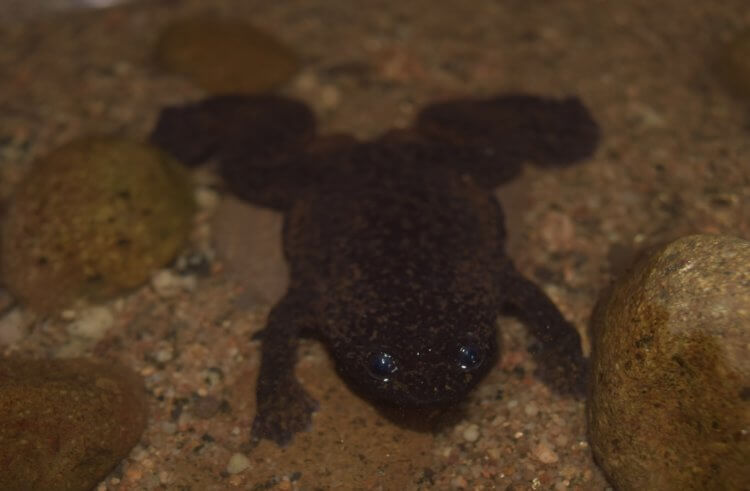Most living organisms on our planet have lungs because we need breathing to generate energy in our cells. When a person breathes, oxygen enters the lungs, and from there it enters the circulatory system – it distributes the vital component to all organs of the body. When breathing, carbon dioxide is formed in the body, which is also eliminated by the lungs. This process occurs in many animals, but some species still do not have lungs. For example, they are absent in salamanders and representatives of some other amphibian species. Instead of lungs, they use the surface of their body to breathe, but sometimes nature presents unexpected surprises. Recently it turned out that the only frogs in the world without lungs still have the respiratory organs familiar to us. Scientists just didn’t notice them.

The Kalimantan barburula was considered a frog without lungs, but it still has them. Photo source: inaturalist.org
What animals do not have lungs
Few people think about it, but some animals really do not have lungs. First of all, we are talking about amphibious creatures like salamanders. Also, fish do not have the respiratory organs that are familiar to us, because they use gills to saturate the body with oxygen. Earthworms breathe through their skin, and insects breathe air through tracheas, a complex network of thin tubes that distribute oxygen throughout the body.

Salamanders are always wet because they can only breathe through wet skin. Photo source: nationalpost.com
How animals breathe without lungs
The main purpose of breathing of any animal is to saturate all internal organs with oxygen. Without oxygen, all living cells in the body begin to die, resulting in complete death. Unlike humans and animals with lungs, the respiratory system of species without lungs is much simpler. You can verify this by looking at how a salamander breathes.
Salamanders have thin and moist skin, penetrated by many blood vessels. When an animal is in water or on land, oxygen from the environment enters the circulatory system directly through the thin skin. Carbon dioxide, which is formed during gas exchange, also exits through the skin.

Salamanders are covered with thin skin, which allows them to do without lungs. Photo source: zoopicture.ru
Many other animals without lungs breathe in the same way. But it is very important for them that the skin is moist, because dry skin prevents the passage of gases, so salamanders caught in a dehydrated environment quickly die from suffocation.
Read also:What happens if you hold your breath for a long time – the record is 24 minutes
Lungs were discovered in a frog without lungs
Sometimes nature gives us surprises. The only species of frog without lungs was considered to be the Kalimantan barbourula (Barbourula kalimantanensis), which is found only in the western part of the third largest island of Kalimantan. It is a small creature about 40 millimeters long with golden brown skin with black spots. The entire body of this frog is flattened, the skin on the legs sags and increases the area of the body.
For many years, scientists were sure that the Kalimantan frog does not have lungs and breathes through the skin. It was believed that a large area of skin helps the frog receive enough oxygen. But the results of a new study, published in the scientific journal Current Biology, turned scientists' knowledge upside down.

The only frog without lungs has been found to have respiratory organs. Image source: elementy.ru
As part of the scientific work, scientists studied the body structure of a rare frog through a powerful tomograph. Thanks to modern equipment, researchers have seen for the first time that inside the Kalimantan amphibian there is a tiny glottis – it is located behind the tongue. Most likely, it was not previously noticeable due to the many folds in the frog’s mouth. Scientists also found muscles that expand the animal’s larynx. They are usually needed for breathing, that is, a rare frog has almost the same respiratory apparatus as other frogs.
The lungs of the Kalimantan barburula are very small and are unlikely to be able to provide the necessary flow of oxygen. Therefore, scientists believe that this creature uses both pulmonary and cutaneous respiration. Perhaps due to this feature, this species of frog can allow itself to swim less in the water, which contributes to its survival. The fact is that staying in rivers for a long time increases the likelihood that animals will be carried away by the current.
Do you want to be the first to know about interesting scientific discoveries? Subscribe to our Zen channel, and then we will do everything ourselves!
So, scientists have discovered something else interesting about frogs. These are amazing creatures, and to see this, you can read our articles about the most poisonous terrible leaf climber and about glass frogs.